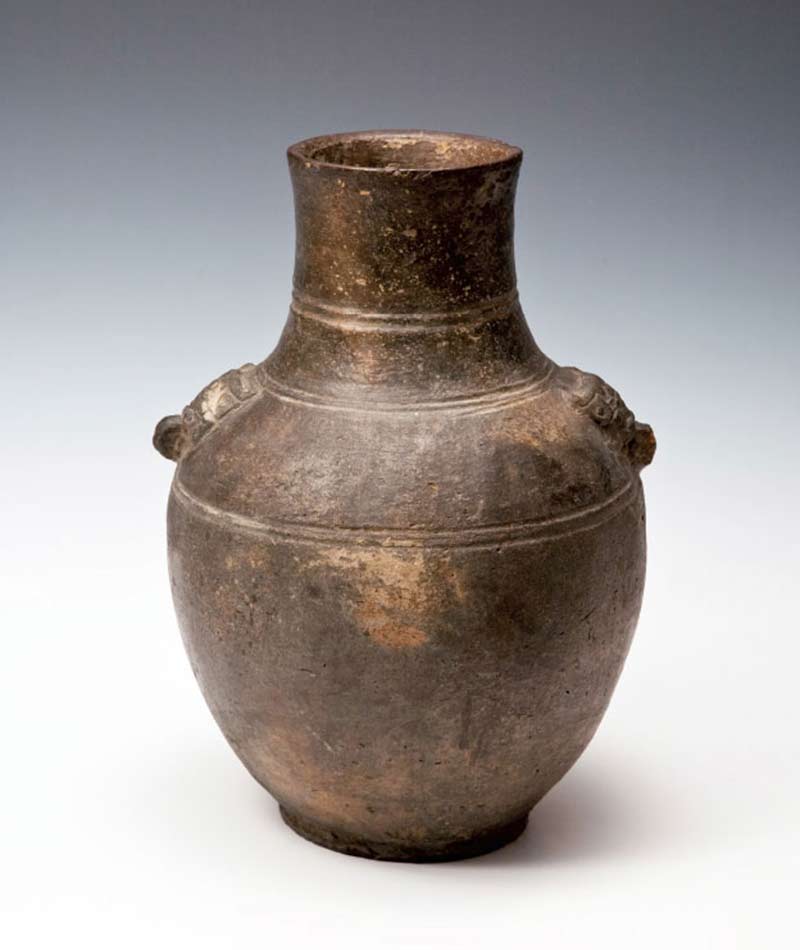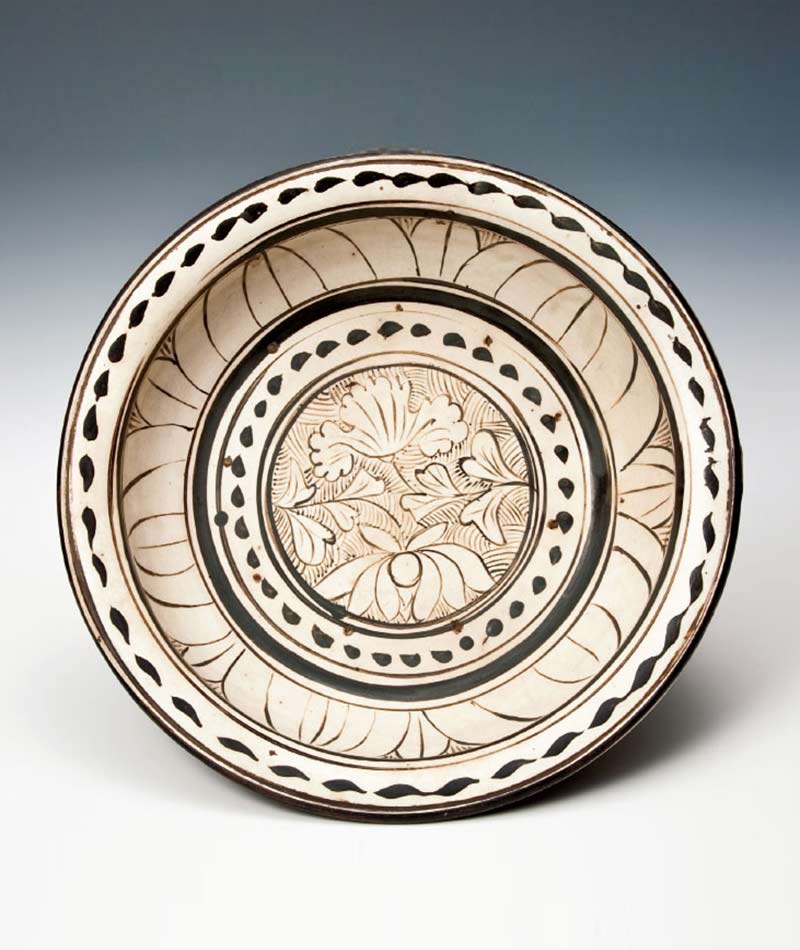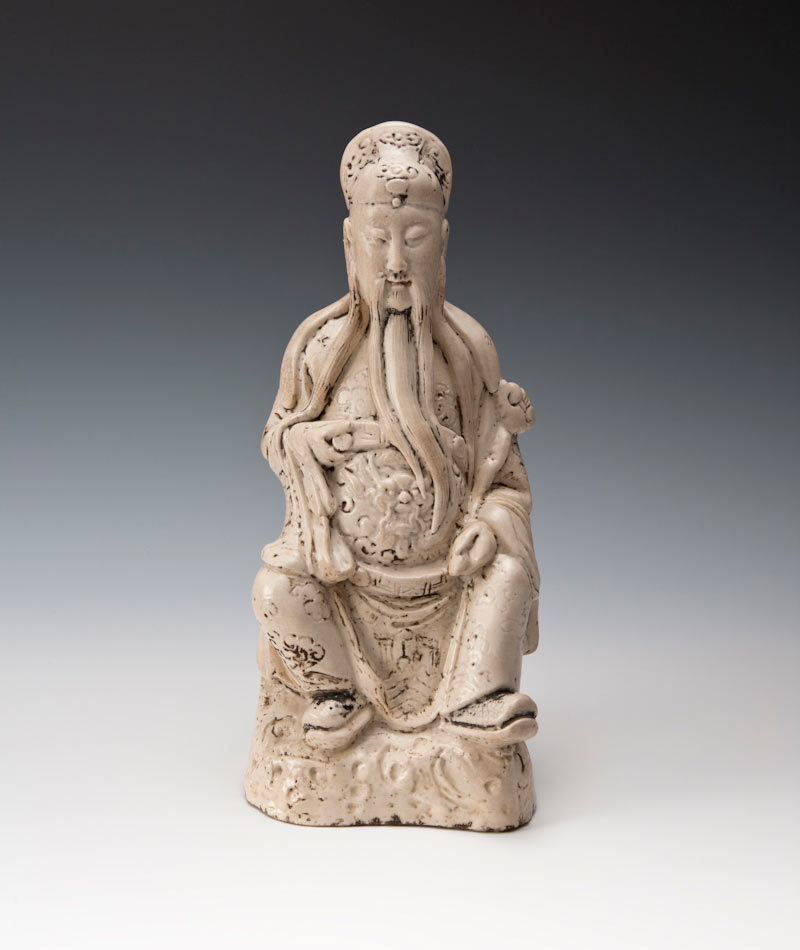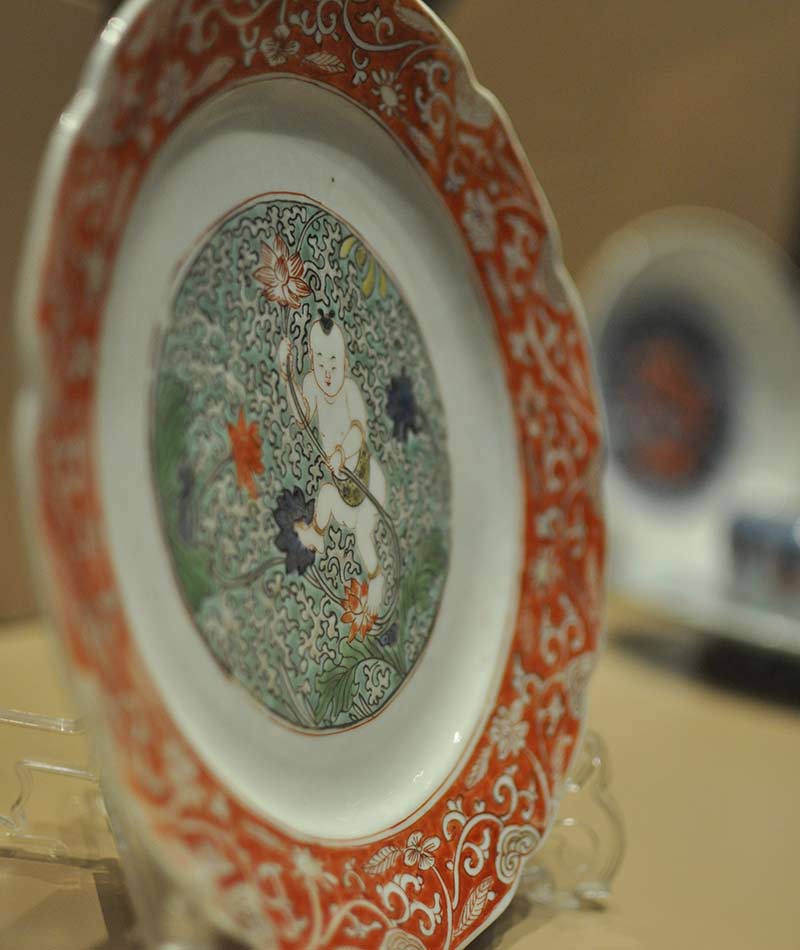Corfu Museum of Asian Art
Ceramics
Chinese Art Collection

The potery
China has one the oldest civilizations in the world. It covers a vast and diverse geographic area, and its history was shaped by the constant ebb and flow of the dynasties, whose names define the respective periods of Chinese culture. Pottery is one of the major forms of Chinese art. By around 4,500 BC each Neolithic community had developed its own pottery. During the Bronze Age (21st to 6th century BC), when China was dominated successively by the Xia, Shang and Zhou dynasties, the basic principles of Chinese ceramics were developed. At the time of the Han (206 BC- 220 AD), the creation of the "Silk Road" lead to the systematic exchange of goods and worldviews between the surrounding countries, and pottery making flourished. During the following centuries new technologies and techniques of creating ceramics were developed. In the Tang dynasty (618-907 AD), pottery reached a very high level of perfection. The first vessels of pure white porcelain made their appearance and the famous tricolor enamel decoration known as "Tang Sancai" was developed.
Pure porcelain
Pure porcelain: clay with additives of kaolin and other ingredients which create a material that is white, pliable, waterproof, resistant to very high temperatures (about 1400°) and smooth enough to take any decoration, was already being used during the Tang Dynasty. By the time of the Song (960 to 1279 AD) the use of porcelain was established and different groups of vessels with characteristic decorations and coloured glazes emerged. Among these groups is the famous Celadon porcelain with its pale green glaze covering an embossed floral decoration, as well as the off-yellow variety with its embossed and painted brown decoration. The pottery of the Song was imitated by their successors, the Yuan Mongols (Yuan Dynasty, 1271-1368 AD), who enriched its range of monochrome glazes with new, very subtle tones, like that of "midnight blue." The Mongols assimilated the superior Chinese culture and continued its long tradition in art. The effect of mutual influences is seen in the first blue - white porcelain which appeared in China as a result of Persian influence.


Ming dynasty
During the Ming dynasty (1368-1644 AD) pottery making flourished. In the south western province of Jiangxi, the imperial workshops of Jingdezhen were the center of ceramic production. The porcelain produced was unique in shape, material and decoration, monochrome or colourful, colour and design once again influenced by Persian standards. This porcelain, and chiefly the monochrome type, was glazed with bright-coloured enamels. The classification of Chinese ceramics into groups or families is based on the colours used in their decoration. During the 14th century, Chinese pottery was enriched through the systematic use of white and blue decoration under the glaze. Gradually other colours were added to these, such as green, red, yellow and gray, creating a new class of vessel, called the "five-colour ware". Another innovation by the Ming was tricolour glaze with purple, green, yellow or turquoise enamels, resembling the pottery of Tang.
Qing period
The early phase of the Qing period (1644-1912 AD) is named Kangxi after the most important emperor of the dynasty. The art of Qing largely imitated the art of the Song and Ming. The category dominated by the "Green Family" decorative style is an evolution of the "Five-colour ware" of the Ming dynasty. Colourful vases, some of which are decorated with blue-white or blue-celadon under the glaze, also mimic older prototypes. Kangxi porcelain and earthenware are considered unique and are in great demand with collectors around the world. The Qing period is characterised by the emergence of many new family groups of porcelain, which are categorised on the basis of the prevailing colour in their decoration. Of the better known is the family of porcelain with a dark red glaze, known as the 'Ox Blood family ", and there are others, such as the "Black Glossy Family ", the" Green of the Camellia", the "Family of the imperial yellow' and the "Pink family." After the mid-18th century, due to a massive increase in orders from Europe, Chinese ceramics were increasingly influenced by European trends.

On display
The ceramics of the Chinese collection of the museum includes artefacts from the late Shang era until the Qing Dynasty (12th century BC to 10th century AD), which are on display in the east wing of the first floor.

